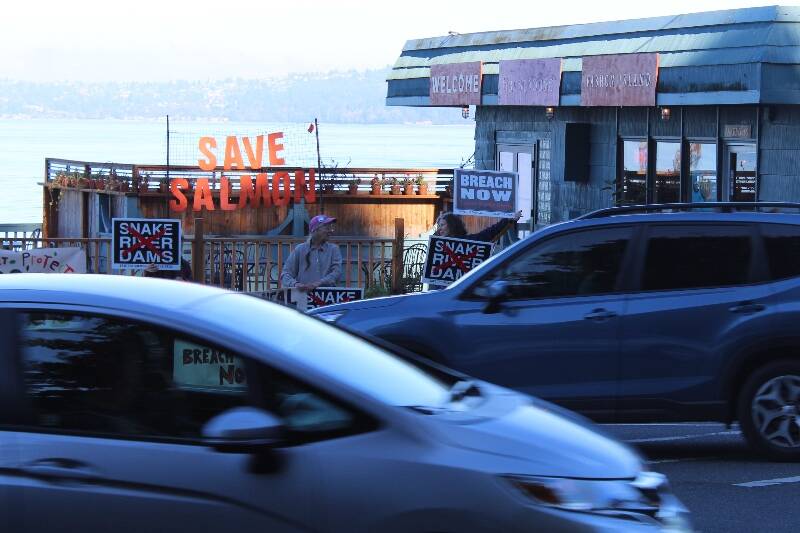A couple dozen kids and adults turned out on Thursday, Oct. 12 at the island’s north-end ferry dock to ask motorists for support in the fight to breach Eastern Washington’s Snake River dams.
The folks with Backbone Campaign, a local progressive action organization, and students from the outdoor Green School, who have been learning about salmon and other local native animals, held banners and waved homemade signs, passed out flyers and asked drivers to call policymakers — all in solidarity with Indigenous People’s Day (Oct. 9) and Orca Recovery Day (Oct. 14.)
The four dams on Washington’s Snake River are used for flood control, barging, agriculture and irrigation, but they also inhibit the flow of endangered salmon, which critically nourish the ecosystem of the Pacific Northwest and play a central role in Indigenous culture.
Proponents of breaching say it’s the best shot salmon have at making a comeback, without which extinction is likely — and part of keeping the government’s promise to the tribes. Critics say measures like spilling more water at the dams would help the fish, and that the dams are needed to support Washington’s farmers.
However, discussions over the dam’s fate reach far and wide due to the broad ecological and economic effects of the decision.
Islanders have been involved in advocacy to remove the dams for years, including those involved in the Backbone Campaign’s efforts as well as those working with the Seattle nonprofit Save our Wild Salmon, led by long-time islander Joseph Bogaard.
Last week wasn’t the first time that Green School students have shown up on the dock to call for the removal of the dams.
“We’re … trying to support the 61 tribes that have called for breaching the dams,” said Dana Schuerholz, founder and lead teacher of the Green School. “And also because we love salmon and Orca, and we know they’re keystone species. … We are in a dire situation, and extinction is forever. Once they’re gone, they’re gone.”



